 I'm cleaning my email box, the modern equivalent of going through old cardboard boxes of letters and other packrattia. I found some scans from my copy of Janet's Pocket Book of Airships plus a memorable email that I sent to a friend on December 16th, 2007. It's a rambler.
I'm cleaning my email box, the modern equivalent of going through old cardboard boxes of letters and other packrattia. I found some scans from my copy of Janet's Pocket Book of Airships plus a memorable email that I sent to a friend on December 16th, 2007. It's a rambler. 12/16/07: Hey what's up? Todd Rundgren was frustrating last night. Pointlessly loud for the Calvin Theatre. And he had no piano. It was like Gallagher with no melons. I mean, Gallagher can do a decent show sans melons but why? Why toy with a fan's expectations with such a conspicuous, nearly hostile omission? How much disrespect will a long-running fan take before they stand up for themselves and consider the years that they've dedicated and say, "enough is enough, Todd!" A girl I once pined for with no dignity told me that she had tried something like this cruelty endurance experiment on me. I forgot how pathetic it got. But I recall accidentally stumbling on "self-respect" in the dictionary while looking up "self-immolation."
12/16/07: Hey what's up? Todd Rundgren was frustrating last night. Pointlessly loud for the Calvin Theatre. And he had no piano. It was like Gallagher with no melons. I mean, Gallagher can do a decent show sans melons but why? Why toy with a fan's expectations with such a conspicuous, nearly hostile omission? How much disrespect will a long-running fan take before they stand up for themselves and consider the years that they've dedicated and say, "enough is enough, Todd!" A girl I once pined for with no dignity told me that she had tried something like this cruelty endurance experiment on me. I forgot how pathetic it got. But I recall accidentally stumbling on "self-respect" in the dictionary while looking up "self-immolation."At the Calvin show, Todd had a blunt four piece rock and roll band, conjuring his subcutaneous Ted Nugent at the expense of a crucial inner Beatle or two. Give me Todd in the studio over Todd live any day. Pictured above is my favorite Todd Rundgren album, "Runt. The Ballad of Todd Rundgren" from 1971. I love isolated tracks from his other albums but this is a the full monty. 1971 saw landmark albums from the late bloomers of the '60s and dozens of brilliant debuts from those who would go on to to define the '70s.
 Joni Mitchell's Blue, John Lennon's Imagine, Badfinger's Straight Up (produced by Todd), Bowie's Hunky Dory, Rod Stewart's Every Picture Tells a Story, Don McLean's American Pie, Carole King's Tapestry, Ry Cooder's Into The Purple Valley, (begrudgingly) Loggins & Messina's Sittin' In. Nick Drake's debut. John Prine's debut. Jonathan Edwards debut. Never mind Zep 4, Who's Next, Sticky Fingers, and Meddle. The Kinks released the sublime Muswell Hillbillies. The Raspberries and Big Star were emerging. Songs were getting much more sophisicated, poetic, literary, wise, witty. It was a good time to be a pop fan with a hungry heart, an FM radio, and a good local record store.
Joni Mitchell's Blue, John Lennon's Imagine, Badfinger's Straight Up (produced by Todd), Bowie's Hunky Dory, Rod Stewart's Every Picture Tells a Story, Don McLean's American Pie, Carole King's Tapestry, Ry Cooder's Into The Purple Valley, (begrudgingly) Loggins & Messina's Sittin' In. Nick Drake's debut. John Prine's debut. Jonathan Edwards debut. Never mind Zep 4, Who's Next, Sticky Fingers, and Meddle. The Kinks released the sublime Muswell Hillbillies. The Raspberries and Big Star were emerging. Songs were getting much more sophisicated, poetic, literary, wise, witty. It was a good time to be a pop fan with a hungry heart, an FM radio, and a good local record store.Here's a pretty complete list (click) of the epic year of music that was 1971.
After a wave of imitators right through the '60s, much of the music of 1971 departed from the Beatles sound. As the fabs wound down as a group, they were going solo in thrilling ways. Todd's album did not shy away from Beatle-esque production and this certainly set it apart from so many of the other of the day. While the'70s spawned saw some of the best melodic pop albums ever, that period was not very friendly to the sound. As a teenager, like so many, I somehow missed "Runt..." Hey, I was 8! It was buried beneath all the others. Discovering the album (and Todd) years later along with Nick Drake and Roy Harper was like finding buried treasure. Missing links. Unknown children.
 There are only a small stack of albums that I consider nearly flawless from top to bottom. There's nary a stiff on this fully realized album as it ebbs and swells with psychedelic, baroque, pop, and folk. I've often found myself ignoring the lyrics (not for lack of content!) and up to my neck in pop goosebumps from the music alone. As for the noose, the album may be a sort of rock operatic suicide note, the last frame of which is the hanging that may be about to happen to the "author" on the cover.
There are only a small stack of albums that I consider nearly flawless from top to bottom. There's nary a stiff on this fully realized album as it ebbs and swells with psychedelic, baroque, pop, and folk. I've often found myself ignoring the lyrics (not for lack of content!) and up to my neck in pop goosebumps from the music alone. As for the noose, the album may be a sort of rock operatic suicide note, the last frame of which is the hanging that may be about to happen to the "author" on the cover. 
 I think of the thousands of albums released in the 35 years since and "Runt..." remains as strong and seminal as ever. Pop balladeers who finally hear it are then stuck with it. Ben Folds and Rufus Wainwright, for better or worse. Once they heard it they had the paradoxical experience of loving it while wishing they'd never heard it at all. But of course Ben and Rufus had heard it...if not from the source, then in the musc of others who had. Todd, like so many of the artists lucky and inspired enough to be making music at the fertile beginnings of the pop timeline, helped develop and combine the very elements that the rest would have to use to make their own music forever thereafter. The Periodic Table of Pop. Sure the Beatles were oxygen but Todd was mercury and what of his stylistic peers like Elton John? A young Tom Waits? David Bowie? Chameleons all, watching and listening to each other changing backdrops and wardrobes to set them apart. Waits the barroom romantic with gutter bravado, Elton the introverted poet whose songs were often about men, Todd, the bizarre and magnetic wizard whose albums the secretly beautiful art room girls carried under their arms around school as a signal, along with notebooks with "Todd is Godd" srawled across the cover. Rundgren went on making music that was more technically and instrumentally ambitious but to me this pure and poignant album hits the spot every time. Note: this was the last album for which his backup band, Runt, shared credit. Runt alumni Hunt and Tony Sales (yes, Soupy's kids) resurfaced in David Bowie's band Tin Machine nearly two decades later. Reeves Gabrels, an awesome guitaist, completed the quartet. A damn shitty record it was too.
I think of the thousands of albums released in the 35 years since and "Runt..." remains as strong and seminal as ever. Pop balladeers who finally hear it are then stuck with it. Ben Folds and Rufus Wainwright, for better or worse. Once they heard it they had the paradoxical experience of loving it while wishing they'd never heard it at all. But of course Ben and Rufus had heard it...if not from the source, then in the musc of others who had. Todd, like so many of the artists lucky and inspired enough to be making music at the fertile beginnings of the pop timeline, helped develop and combine the very elements that the rest would have to use to make their own music forever thereafter. The Periodic Table of Pop. Sure the Beatles were oxygen but Todd was mercury and what of his stylistic peers like Elton John? A young Tom Waits? David Bowie? Chameleons all, watching and listening to each other changing backdrops and wardrobes to set them apart. Waits the barroom romantic with gutter bravado, Elton the introverted poet whose songs were often about men, Todd, the bizarre and magnetic wizard whose albums the secretly beautiful art room girls carried under their arms around school as a signal, along with notebooks with "Todd is Godd" srawled across the cover. Rundgren went on making music that was more technically and instrumentally ambitious but to me this pure and poignant album hits the spot every time. Note: this was the last album for which his backup band, Runt, shared credit. Runt alumni Hunt and Tony Sales (yes, Soupy's kids) resurfaced in David Bowie's band Tin Machine nearly two decades later. Reeves Gabrels, an awesome guitaist, completed the quartet. A damn shitty record it was too. Meanwhile back to the present and the lobby of the Calvin Theatre, I felt the need to apologize to a mom and dad shaking their heads and leaving the hard rockin' Rundgren show early with their 12 or 13 year old in tow. They told me they had brought their son up from Hartford promising him a little musical history lesson and some great music. They should have just given him a few early Todd albums. It made me sad to witness a courageous and well intentioned family rock-outing miss the mark. I don't think many parents of the 1950s and 1960s tried to get their kids excited about crooners, big bands, and MOR balladeers. Probably because they themselves weren't feverish about their era's popular music; the decidedly well-behaved and tamely titled tabulatures of the "hit parade."
Meanwhile back to the present and the lobby of the Calvin Theatre, I felt the need to apologize to a mom and dad shaking their heads and leaving the hard rockin' Rundgren show early with their 12 or 13 year old in tow. They told me they had brought their son up from Hartford promising him a little musical history lesson and some great music. They should have just given him a few early Todd albums. It made me sad to witness a courageous and well intentioned family rock-outing miss the mark. I don't think many parents of the 1950s and 1960s tried to get their kids excited about crooners, big bands, and MOR balladeers. Probably because they themselves weren't feverish about their era's popular music; the decidedly well-behaved and tamely titled tabulatures of the "hit parade."This scene surely plays out every night somewhere. Parents of the "rock age" try to connect with their kids through music; plunk them down at a concert and hope that Rundgren (or
 Donovan or The Who or The Stooges or Judy Collins or Chris Hillman or Mick Taylor or Al Green or NRBQ) will convey enough of the spirit and authenticity that each generation finds in their own youth (and believes is missing from the next) so that mom and dad can be understood or at least seen as cool, if fleetingly. I was at a Turtles concert in Los Angeles in 1998 and Howard Kaylan and Mark Volman (aka Flo and Eddie) performed those stupendous underrated Turtles songs and at one point shouted, "Hey kids! Look how stupid your parents look!" Precious moments in humble self-mockery. You see a lot of punk parents too, hoping to connect their kids' Green Day love to some first generation Buzzcocks, Clash, Ramones, Jam, Husker Du, etc. And then there are those sad dads without taste or a clue who kill their sons with the endless shitstorm of vapid merch and music from KISS.
Donovan or The Who or The Stooges or Judy Collins or Chris Hillman or Mick Taylor or Al Green or NRBQ) will convey enough of the spirit and authenticity that each generation finds in their own youth (and believes is missing from the next) so that mom and dad can be understood or at least seen as cool, if fleetingly. I was at a Turtles concert in Los Angeles in 1998 and Howard Kaylan and Mark Volman (aka Flo and Eddie) performed those stupendous underrated Turtles songs and at one point shouted, "Hey kids! Look how stupid your parents look!" Precious moments in humble self-mockery. You see a lot of punk parents too, hoping to connect their kids' Green Day love to some first generation Buzzcocks, Clash, Ramones, Jam, Husker Du, etc. And then there are those sad dads without taste or a clue who kill their sons with the endless shitstorm of vapid merch and music from KISS.I think I was more upset for this family than they were for themselves. I often feel (or imagine) other people's pain much more than my own. I can field and process my own shit but don't make me watch an injustice. Especially if it's happening to animals of course, or kind and well-intentioned people looking for some meaningful human connections. I wanted to yell at Todd. He knows
 exactly what so many of his fans want but baely throws a bone and goes so far as to mock them for wanting to hear the classics. "Okayyyyyyy" he scowls and in his best McCain dismissal of Obama. "I'll play that one." But then it's not even "Hello It's Me" he plays but the lesser "I Saw the Light."
exactly what so many of his fans want but baely throws a bone and goes so far as to mock them for wanting to hear the classics. "Okayyyyyyy" he scowls and in his best McCain dismissal of Obama. "I'll play that one." But then it's not even "Hello It's Me" he plays but the lesser "I Saw the Light." I wish he'd do a solo acoustic tour with just guitar and piano like Jackson Browne did! I heard rumors he'll be playingh The Hermit of Mink Hollow or maybe it was A Wizard A True Star in its entirety in a few cities. Note: since this Calvin gig, Todd brought his band back to town for an intimate Iron Horse show (photo above) and proceeded to play to the bleachers again with amp knobs wound well past 11. While not the living room concert of my dreams, it was a great show and he played ferocious guitar. He began the show but taking in the view of the Iron Horse from the stage and saying, "Thanks for joining us here in our quaint party loft, friends."
 Yesterday I found myself with what must have looked like a deliberate hipster cred kit, walking home with my Patti Smith record under my arm, not in a bag. I picked up Horses on vinyl for 5 bucks at Turn It Up! (Their exclamation point.) Yes, a 33 1/3 RPM Long Playing record album with "Gloria" starting side one and "Kimberly" side two. Boom flip boom done. As opposed to one continuous digital faucet of Patti with a bonus live version of "My Generation" to incentivize the purchase of the CD. Two sides. A chance to inhale and exhale and actually go to the turntable, flip the LP, and drop the needle onto a new chapter. A new beginning. Plus, of course, the 1 foot square album cover, visible and identifiable from as far as 80 feet away if you know what you're loooking for.
Yesterday I found myself with what must have looked like a deliberate hipster cred kit, walking home with my Patti Smith record under my arm, not in a bag. I picked up Horses on vinyl for 5 bucks at Turn It Up! (Their exclamation point.) Yes, a 33 1/3 RPM Long Playing record album with "Gloria" starting side one and "Kimberly" side two. Boom flip boom done. As opposed to one continuous digital faucet of Patti with a bonus live version of "My Generation" to incentivize the purchase of the CD. Two sides. A chance to inhale and exhale and actually go to the turntable, flip the LP, and drop the needle onto a new chapter. A new beginning. Plus, of course, the 1 foot square album cover, visible and identifiable from as far as 80 feet away if you know what you're loooking for.Albums used to be sequenced to flow with this side two phenomenion in mind. This Who can forget Zep 4's one-two punch. Side 1, track 1; "Black Dog." Side 2, track 1; "Misty Mountain Hop." Never mind the Beatles' white album double LP with four side-lead off tracks (USSR, Martha, Birthday, Revolution 1). The album reconfigured to a 2CD set, divided the four sides into two. But you couldn't de-seed your weed in a double CD brothers and sisters.
 Unless I'd just bought it, I was usually content with listening to side one of most records, moving onto something else. Back then, I'd heard only "Trampled Underfoot" off of Zep's Physical Graffitti so playing those four sides in one sitting was a given for everyone the day it came out. There was just radio. No online music to screen before plunking down your allowance...3 weeks worth for that double album set which did not dissapoint, musically or graphically, as it echoed the die-cut windows of Zep 3 though a bit darker. Some albums only had one good side. Or one that was clearly stronger ayway. CDs demand upwards of 80 minutes of uninterrupted music by the same artist. That's asking a lot of the listener. After 80 minutes of Lemmy, a metal-head cookie monster with a smokers hack and vocal chords battle scarred from wailing essentially the same song for 40 years, I'm suddenly not in the mood to hear any more Motorhead for a good long while. Jeez. Even Joni Mitchell's early beauties can wear you down emotionally in one sitting. Take it easy on yourself.
Unless I'd just bought it, I was usually content with listening to side one of most records, moving onto something else. Back then, I'd heard only "Trampled Underfoot" off of Zep's Physical Graffitti so playing those four sides in one sitting was a given for everyone the day it came out. There was just radio. No online music to screen before plunking down your allowance...3 weeks worth for that double album set which did not dissapoint, musically or graphically, as it echoed the die-cut windows of Zep 3 though a bit darker. Some albums only had one good side. Or one that was clearly stronger ayway. CDs demand upwards of 80 minutes of uninterrupted music by the same artist. That's asking a lot of the listener. After 80 minutes of Lemmy, a metal-head cookie monster with a smokers hack and vocal chords battle scarred from wailing essentially the same song for 40 years, I'm suddenly not in the mood to hear any more Motorhead for a good long while. Jeez. Even Joni Mitchell's early beauties can wear you down emotionally in one sitting. Take it easy on yourself.
 But even these issues are becoming archaic in the age of single track downloads and shuffle. Some people are too young to remember that it started out this way. The star-making machinery of pop music was a singles factory in the beginning. Albums were usually just a compilation of the singles, often with filler material if the band wasn't as chart friendly and consistently prolific as the Beatles. The Kinks' and Stones' earlier "albums" had some relatively weak material gluing it all together. The albums were the last step of the era's sales cycle which was first and foremost about selling 45s. But that all changed with the advent of FM, LSD, TM, THC, Rolling Stone magazine, and record stores staffed by music freaks who, like FM DJ's, were the era's hippest and most envied middlemen...aside from the musicians themselves.
But even these issues are becoming archaic in the age of single track downloads and shuffle. Some people are too young to remember that it started out this way. The star-making machinery of pop music was a singles factory in the beginning. Albums were usually just a compilation of the singles, often with filler material if the band wasn't as chart friendly and consistently prolific as the Beatles. The Kinks' and Stones' earlier "albums" had some relatively weak material gluing it all together. The albums were the last step of the era's sales cycle which was first and foremost about selling 45s. But that all changed with the advent of FM, LSD, TM, THC, Rolling Stone magazine, and record stores staffed by music freaks who, like FM DJ's, were the era's hippest and most envied middlemen...aside from the musicians themselves. It was now taking more than three minutes for career-oriented artists (vs. one- or two-hit wonders) to realize their older, wiser, and "expanded" visions. The Beatles and Beach Boys nailed it, as did so many more as the golden age of the long-playing album bloomed and boomed. Even R&B icon Marvin Gaye embarked on Here, My Dear. Made to fund his divorce from Anna Gordy, Gaye had originally planned a quickly recorded album, low on quality, to spite his one time muse, since the judge had written the order into the divorce settlement. The original critical response to Here, My Dear seemed to reinforce that view, as Gaye's popularity waned spectacularly in the late 70's. Indeed, it had been an incredible fall from the heights of the "What's Going On" era. This is latter day Marvin Gaye, the tracks built up over hours of improvisation, the lyrics refined to a ferocious honesty which is wonderfully conveyed in the haunting vocal performance. Marvin Gaye had better known albums, had many bigger hits, and also had other personal traumas which provided his motivation. Whatever, listening to this album brings you to the heart of the man, crying out for his love, knowing it was lost and being able to do nothing about it. The scope of the albums of the late '60s and '70s mirrored the complexity of the artist's lives as the young hitmakers grew into adults with all attendant complexities. Many albums were as subsantial as books with respect to cultural impact, and were treated as such editorially as the era of the rock critic blossomed and reviewers joined the DJs and store clerks in the assembly line of cool.
It was now taking more than three minutes for career-oriented artists (vs. one- or two-hit wonders) to realize their older, wiser, and "expanded" visions. The Beatles and Beach Boys nailed it, as did so many more as the golden age of the long-playing album bloomed and boomed. Even R&B icon Marvin Gaye embarked on Here, My Dear. Made to fund his divorce from Anna Gordy, Gaye had originally planned a quickly recorded album, low on quality, to spite his one time muse, since the judge had written the order into the divorce settlement. The original critical response to Here, My Dear seemed to reinforce that view, as Gaye's popularity waned spectacularly in the late 70's. Indeed, it had been an incredible fall from the heights of the "What's Going On" era. This is latter day Marvin Gaye, the tracks built up over hours of improvisation, the lyrics refined to a ferocious honesty which is wonderfully conveyed in the haunting vocal performance. Marvin Gaye had better known albums, had many bigger hits, and also had other personal traumas which provided his motivation. Whatever, listening to this album brings you to the heart of the man, crying out for his love, knowing it was lost and being able to do nothing about it. The scope of the albums of the late '60s and '70s mirrored the complexity of the artist's lives as the young hitmakers grew into adults with all attendant complexities. Many albums were as subsantial as books with respect to cultural impact, and were treated as such editorially as the era of the rock critic blossomed and reviewers joined the DJs and store clerks in the assembly line of cool. And fittingly we come back to cool; the epoxy of rock. So there I was walking down the street in Northampton with my Patti Smith vinyl, held so it looked casual (and visble) enough to draw looks of envy from people who wondered if they would ever be as cool and interesting as I obviously was. Never mind the additional renegade bad boy magnetism suggested by the video I rented, A Junkie's Christmas, a claymation film set to a William Burroughs short story tucked under my arm on top of Patti but not obscuring the cover. Never mind the maverick steam-punk renaissance man implications of "Jane's Pocket Book of Airships" that I got for 3 dollars, filled with dirigibles and blimps and zeppelins and their technical specifications. I'm surprised I wasn't hit on by a Hampshire chick or called out for pushing the limits of plausible hip accesorization. I'm surprised I didn't slip on the ice and fall on my ass trying to nail the proper strut for such a fascinating man.
And fittingly we come back to cool; the epoxy of rock. So there I was walking down the street in Northampton with my Patti Smith vinyl, held so it looked casual (and visble) enough to draw looks of envy from people who wondered if they would ever be as cool and interesting as I obviously was. Never mind the additional renegade bad boy magnetism suggested by the video I rented, A Junkie's Christmas, a claymation film set to a William Burroughs short story tucked under my arm on top of Patti but not obscuring the cover. Never mind the maverick steam-punk renaissance man implications of "Jane's Pocket Book of Airships" that I got for 3 dollars, filled with dirigibles and blimps and zeppelins and their technical specifications. I'm surprised I wasn't hit on by a Hampshire chick or called out for pushing the limits of plausible hip accesorization. I'm surprised I didn't slip on the ice and fall on my ass trying to nail the proper strut for such a fascinating man. I am trying to find a Bjork poster for Noah, my nephew who turns 6 on Xmas. He has evolved from Abba to Madonna and now arrived at Bjork. It's time to start warming up the Bowie for next year lest he veer into Jonas Brothers territory. Holy Freaking Christ I won't allow it. I cannot find a Bjork poster. When I was the poster buyer at Faces I always had some Bjork on hand. Two different ones in fact. Yesterday I discovered the new poster guy had opted not to carry it...or the two Iggys or the two Bowies. Okay, maybe we only sold a few copies a year of each but you have to give the people what they OUGHT to want, not what they want, dammit. The store needed merely stock these posters to send a signal to the ever vigilant hipsters that the store had a clue. Sometimes just carrying the Patti Smith record under your arms is enough. I mean, how many different Johnny Depp posters can Faces reasonably carry? Seven at last count. So maybe I will have to do a Bjork collage. I'm going to feel like a closeted high school teen decorating his locker with my paste and scissors and Bjork cut outs. And Mod Podge of course. High gloss.
I am trying to find a Bjork poster for Noah, my nephew who turns 6 on Xmas. He has evolved from Abba to Madonna and now arrived at Bjork. It's time to start warming up the Bowie for next year lest he veer into Jonas Brothers territory. Holy Freaking Christ I won't allow it. I cannot find a Bjork poster. When I was the poster buyer at Faces I always had some Bjork on hand. Two different ones in fact. Yesterday I discovered the new poster guy had opted not to carry it...or the two Iggys or the two Bowies. Okay, maybe we only sold a few copies a year of each but you have to give the people what they OUGHT to want, not what they want, dammit. The store needed merely stock these posters to send a signal to the ever vigilant hipsters that the store had a clue. Sometimes just carrying the Patti Smith record under your arms is enough. I mean, how many different Johnny Depp posters can Faces reasonably carry? Seven at last count. So maybe I will have to do a Bjork collage. I'm going to feel like a closeted high school teen decorating his locker with my paste and scissors and Bjork cut outs. And Mod Podge of course. High gloss.














































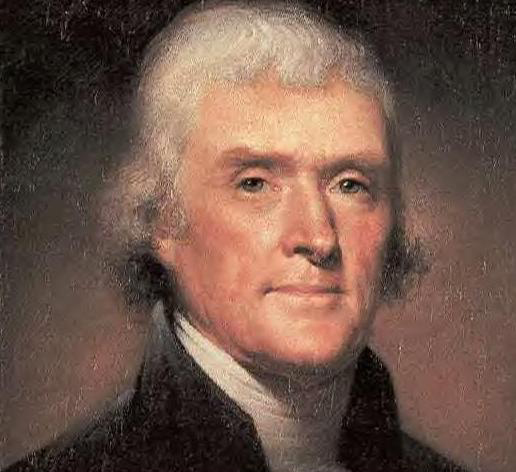





























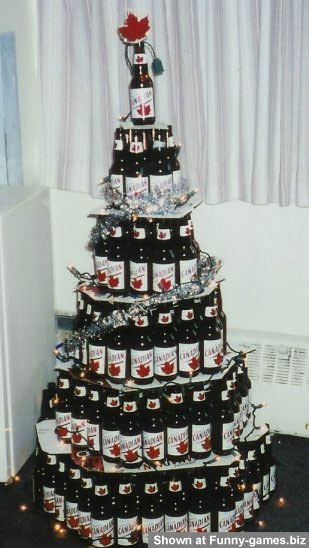









.jpg)









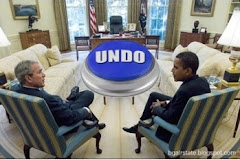
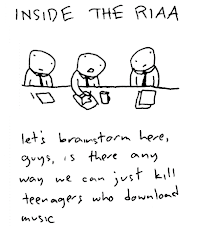





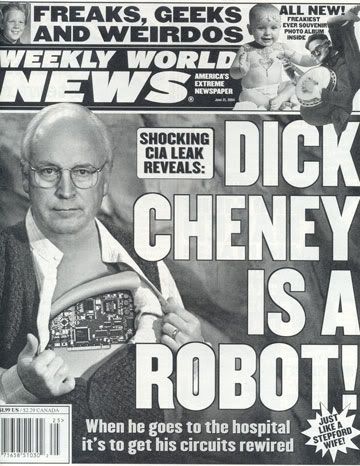









































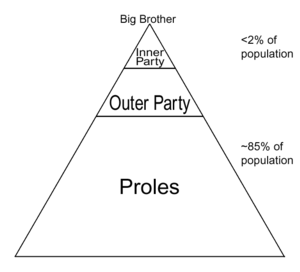








































No comments:
Post a Comment